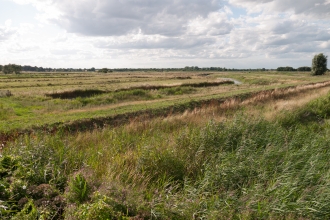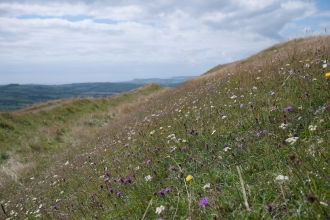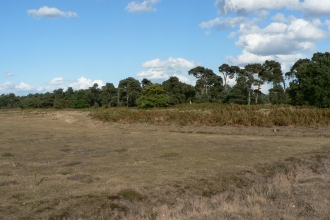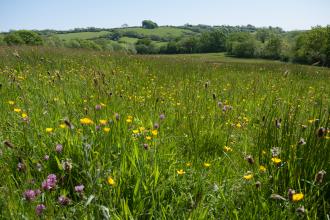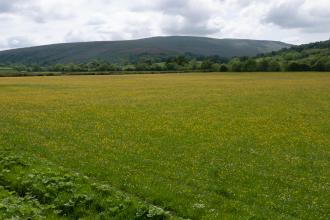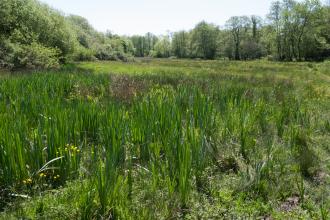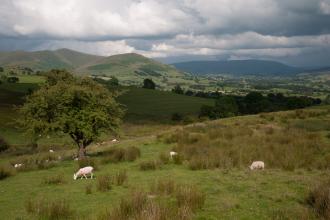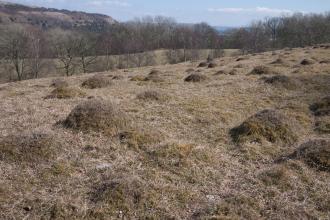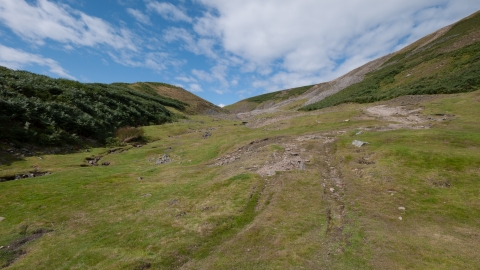
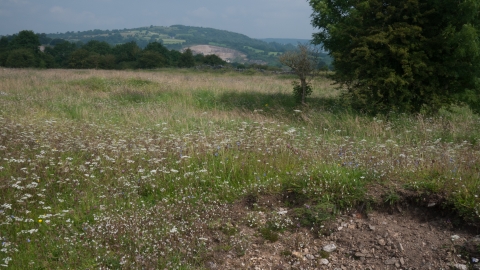
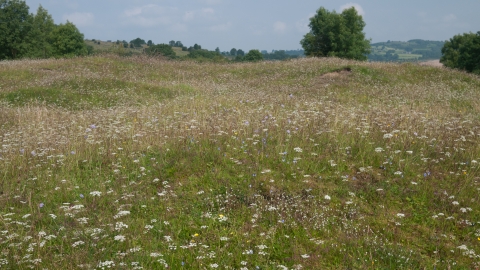
Calaminarian grassland
What is it?
Calaminarian grassland is named after Viola calaminaria, a plant found growing in grasslands on metal-rich soils in continental Europe, and named after the zinc ore calamine. While the violet itself is absent from the UK, almost 30% of the calaminarian grassland in Europe is found here.
This unusual type of grassland develops on nutrient-poor soils with high levels of toxic heavy metals, such as zinc, lead, chromium and copper. It is generally associated with old mine workings on limestone, some dating back to Roman times, although much is quite recent - a product of mid-19th century mining. It is also found on exposed river shingle, including where heavy metals from mine-wash have accumulated on river beaches and terraces. In a few places, it occurs on soils containing a high proportion of rock fragments, ‘skeletal soil’, over rock containing ‘serpentine’ minerals (so named for their resemblance to snake skin) and exposed mineral veins - mainly in the Scottish Highlands.
The vegetation is generally sparse, although grazing by rabbits or sheep is often needed to prevent scrub from taking over. There are several thousand sites, but relatively few are species-rich. River shingles tend to support the widest variety of plants.
Why is it like this?
Most plants can't tolerate the high levels of heavy metals found in soils underlying calaminarian grassland, so the habitat is characterised by a limited range of species. Some species, including sheep’s fescue, bladder campion and thrift, have specially adapted forms that can grow here, while others, including spring sandwort (also known as leadwort) and alpine pennycress, specifically live in this habitat.
Belonging to a botanical category called 'metallophytes', the specialist plants that grow here actively retain some metals. This has the benefit of deterring pests and immobilising others. Species that typically live on limestone grassland are also common here, and include thyme and kidney vetch. There is also a range of metal-tolerant lower plants, including the liverwort greater copperwort, which is only found in the UK. The metal content, lack of nutrients and lack of humus to retain water help to maintain the conditions suitable for these species by preventing the vigorous growth of more competitive species.
Distribution in the UK
Calaminarian grassland is found in a wide variety of locations, though there is only an estimated 450 hectares of this habitat. Hotspots are found in mid-Wales, the Pennines and the Highlands.
What to look for
Not all sites are species-rich, but look out for scarce plants such as northern rock-cress and forked spleenwort (a fern). Pyrenean scurvy-grass is found on wet mine spoil or river shingle, and dune helleborine can be found on shingle sites containing birch woodland. Northern sites may support Arctic sandwort and Shetland mouse-ear - another species only found in the UK. In some places, you might spot the signs of an industrial past - look for evidence of flues, ponds and slag heaps.
Conservation
Calaminarian sites have been lost over recent years through re-working for minerals, agricultural ‘improvement’, scrub encroachment and the canalisation of rivers. Heavy metals are gradually lost - for example through natural leaching or the accumulation of topsoil on the substrate surface - and are not renewed as mining has ceased. In such cases, scrapes may be made to expose metal-rich substrates. The very small size of many sites can make sustainable management a challenge, and management also needs to be sensitive to locations that often have unique historical significance.

